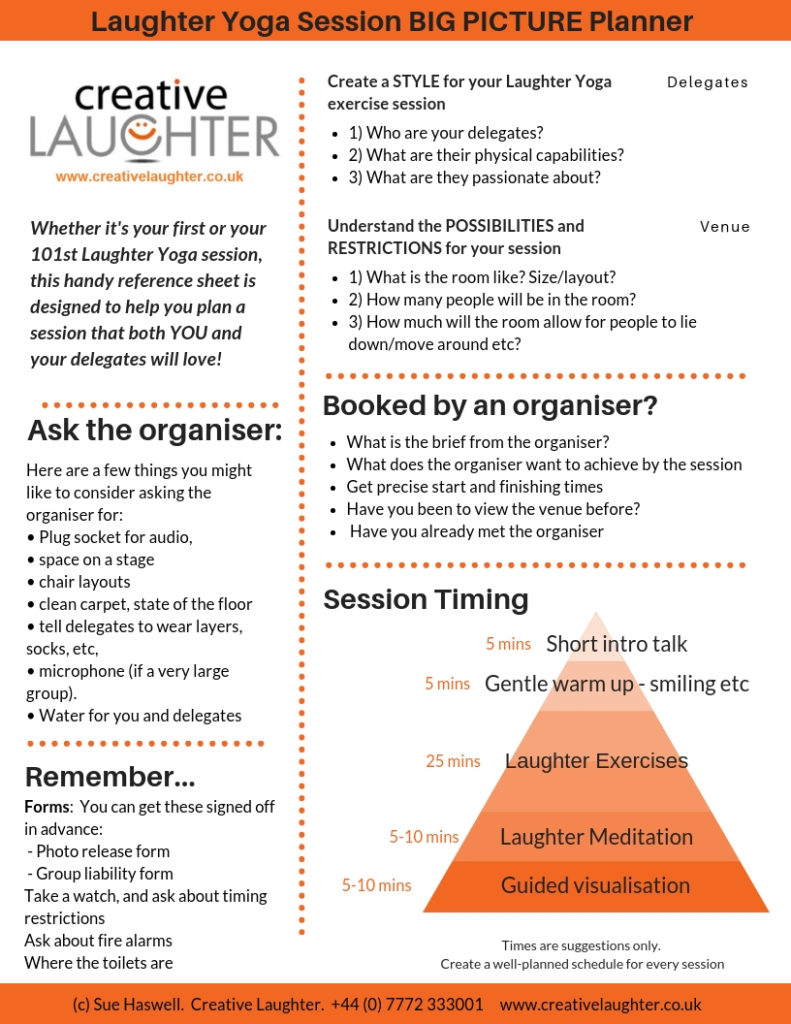Good Leadership is key to boosting productivity, keeping employees engaged, and creating a positive work culture. While traditional management techniques often focus on strategies and processes, thinking outside the box can make a huge difference. Enter Laughter Yoga! This unique practice mixes laughter with deep breathing, and it’s a fantastic way to support managers in their roles. Let’s dive into how Laughter Yoga can benefit you as a leader, supervisor or manager and help you support your team to success.
- Positive Work Environment:
Laughter Yoga is all about fostering a positive and inclusive atmosphere. When managers participate in laughter exercises, they set a joyful tone for their teams. Laughter is contagious—when you’re upbeat and laughing, your team is likely to follow suit. This uplifting vibe leads to happier employees, which in turn boosts motivation, loyalty, and productivity. - Communication and Rapport:
Effective communication is crucial for any successful manager. Laughter Yoga encourages non-verbal communication, breaking down barriers and building rapport. By integrating laughter into your interactions, you create a space for open, honest dialogue. This not only fosters trust and understanding but also strengthens team bonds. - Stress Management and Resilience:
Let’s face it—managers often juggle a lot of stress. Laughter Yoga can be a great stress buster, helping you manage those pressures. Regular laughter exercises release endorphins and reduce stress hormones, making it easier for you to stay calm and focused. When you handle stress well, your team is likely to respond positively too. - Creativity and Innovation:
Innovation is essential for growth. Laughter Yoga can spark creativity and fresh ideas among managers. By incorporating laughter into meetings and activities, you create a relaxed environment that encourages innovative thinking. When you lead with laughter, you inspire your team to approach challenges creatively. - Boosting Trust and Employee Engagement:
Trust is the cornerstone of effective management. Laughter Yoga helps you build that trust by creating a safe, non-judgmental space for your team. When employees feel comfortable expressing themselves, it fosters open dialogue and engagement. Feeling heard and valued makes them more committed and loyal to the organization. - Morale and Motivation:
As a manager, you play a vital role in keeping spirits high. Laughter Yoga lifts moods and creates a sense of joy among employees. When you infuse laughter into your leadership style, you energize your team and promote a positive spirit. High morale leads to motivated employees who are more likely to go above and beyond. - Emotional Intelligence:
Emotional intelligence is a key trait of effective managers. Laughter Yoga enhances your emotional awareness and empathy. Engaging in laughter exercises helps you connect with your own emotions and understand those of your team. This deeper emotional intelligence allows you to respond sensitively to your team’s needs and build supportive relationships. - Team Collaboration and Productivity:
Laughter Yoga encourages teamwork and productivity. When you include laughter exercises in team activities, you create shared experiences that strengthen relationships. Laughter breaks down hierarchies and promotes equal participation, leading to greater cohesion and a more productive team.
So – to sum up…
Laughter Yoga offers team leadersand managers a powerful way to enhance their leadership skills and create a positive work culture. By weaving laughter into your management approach, you can build trust, improve communication, boost morale, and encourage innovation. It’s not just about supporting your success; it’s also about enhancing the well-being and productivity of your entire team. Embrace the power of laughter, and watch your workplace transform into a thriving, harmonious environment!




 to suit different ages and requirements, the principles are the same – using the beneficial psychology and physiology of Laughter training to bring about positive and deep-seated effects.
to suit different ages and requirements, the principles are the same – using the beneficial psychology and physiology of Laughter training to bring about positive and deep-seated effects.




